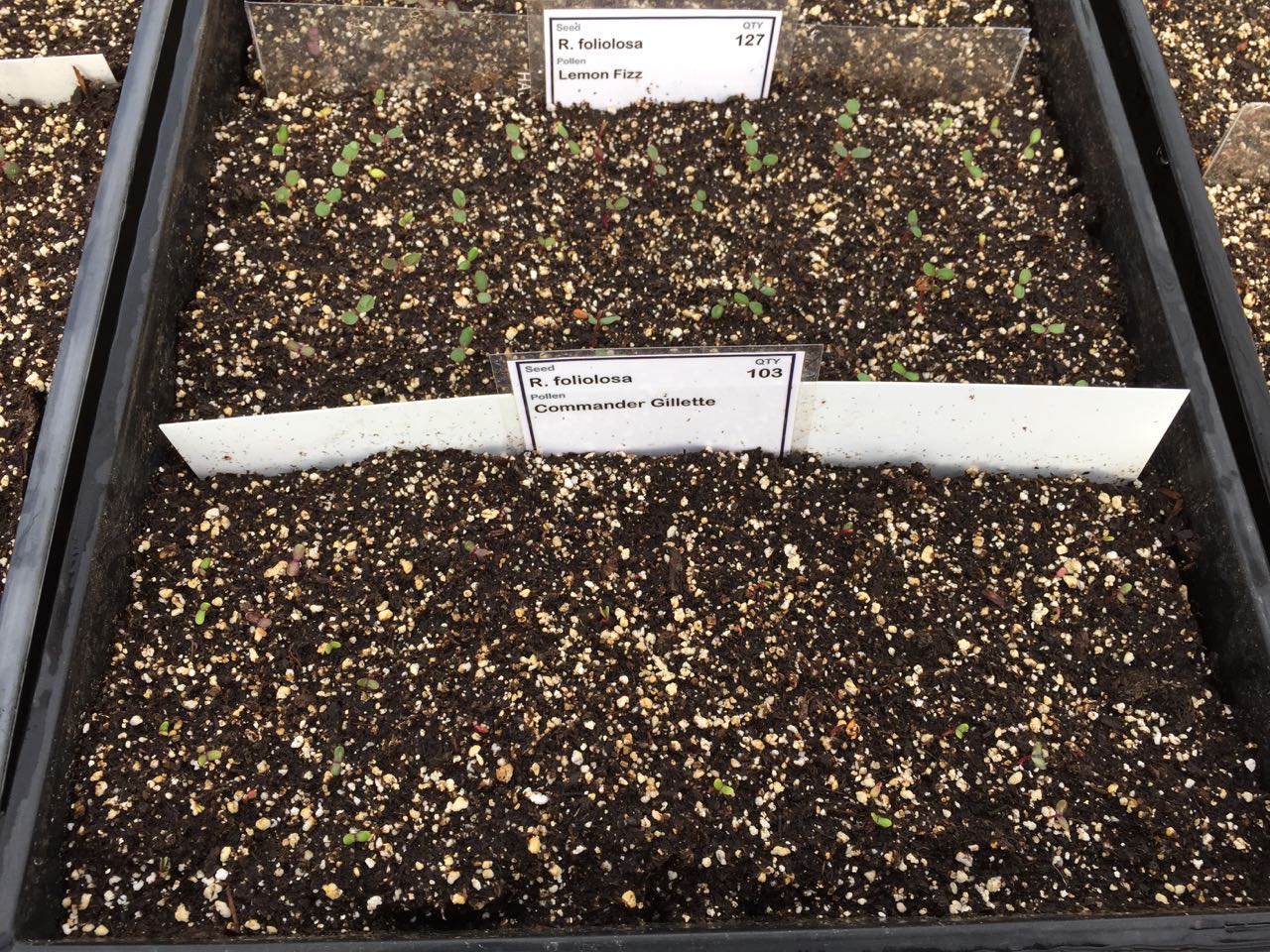I thought this was very interesting. I have a batch of R. foliolosa x Lemon Fizz and a batch of R. foliolosa x Commander Gillette in the same seedling flat right next to each other. The overall germination rate seems to be similar, but the seeds with CG as pollen parent appear to be germinating a few days later that those with Lemon Fizz as a pollen parent. You might have to expand the picture and look closely to see the newly emerging seedlings of the CG cross.
This seems to indicate that the pollen parent has a distinct influence on germination time. However, it is impossible to rule out a difference in hip maturity between the two crosses, since I didn’t record when the crosses were made.
Also in the same seedling flat there are a bunch of R. foliolosa x Grouse that have, on average, a distinctly darker cotyledon color than the foliolosa x Lemon Fizz. The relative uniformity of the differences between the seedlings of all three pollen parents, both in germination timing and cotyledon color, along with the high germination rates, makes me excited about using R. foliolosa. It seems to be very amenable to a wide range of pollens and not prone to selfing.
